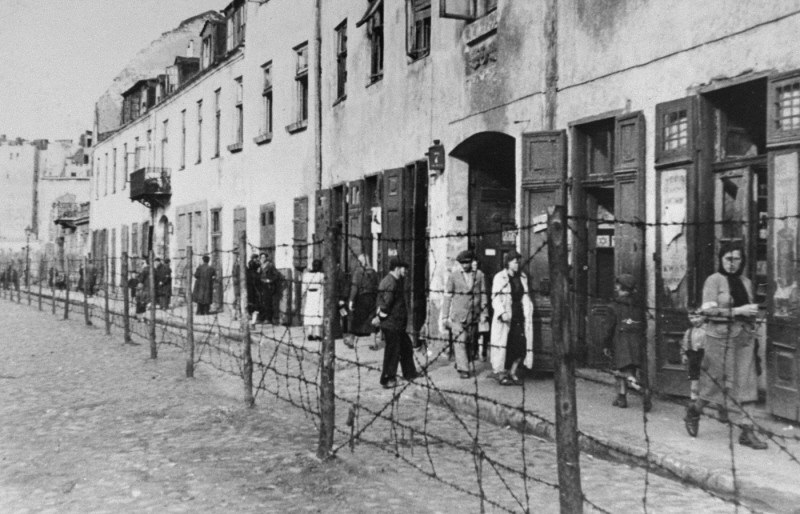
1941: Key Dates
1941
At some point in 1941, Adolf Hitler, Heinrich Himmler, Reinhard Heydrich and other top personnel reach the decision to physically annihilate the Jews of Europe.
January 10
In the Netherlands, German occupation authorities require all Jews to register with the municipal registration offices.
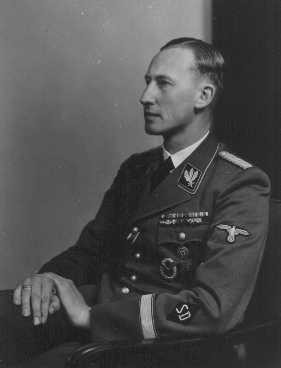
January
RSHA chief Reinhard Heydrich submits the general outline of a plan to implement a "total solution" to the so-called Jewish question in German-controlled Europe.
January 21–23
Frustrated with the perceived caution of Romanian General Ion Antonescu in taking harsh measures against Jews and political opponents and encouraged clandestinely by German SD intelligence agents, Iron Guard leaders rise up against Antonescu. Backed by Hitler, the German Wehrmacht (armed forces), and the German Foreign Office, Antonescu and the Romanian army crush the rebellion, but not before elements of the Iron Guard instigate a bloody and lethal pogrom in the Jewish neighborhoods of Bucharest, murdering over 100 Jews.
March 1
Heinrich Himmler orders the construction of a large camp to house 100,000 prisoners of war outside the village of Birkenau (Brzezinka), approximately one mile from the Auschwitz concentration camp.
March 1
Hungary (November 20), Romania (November 23), and Slovakia (November 24) signed the Tripartite Pact and became Axis partners in 1940. Bulgaria follows suit on March 1, 1941; the so-called Independent State of Croatia joins on June 15, 1941.
March 3–20
German authorities announce, establish, and seal a ghetto in Krakow, Poland.
March–April
Gestapo officials negotiate agreements with representatives of the German army and Armed Forces High Commands, defining the authority and activity of mobile German Security Police and SD units, known as Einsatzgruppen, behind the front after the planned invasion of the Soviet Union.
March
In occupied France, German authorities open the internment camp at Beaune-la-Rolande to incarcerate both French Jews and foreign Jews residing in occupied France. The German authorities often interned Jews in Beaune-la-Rolande and other detention camps before transferring them to Drancy, from where the SS later deports them to the Auschwitz concentration camp and the Sobibor killing center.
April 6
German and other Axis forces invade Yugoslavia and Greece. On April 10, the underground Croat separatist and terrorist Ustasa (Insurgent) movement seize power in Croatia and proclaim a state independent of Yugoslavia with German and Italian blessings.
April 7
German occupation authorities establish two ghettos in Radom, in which they concentrate the Jewish population of the city.
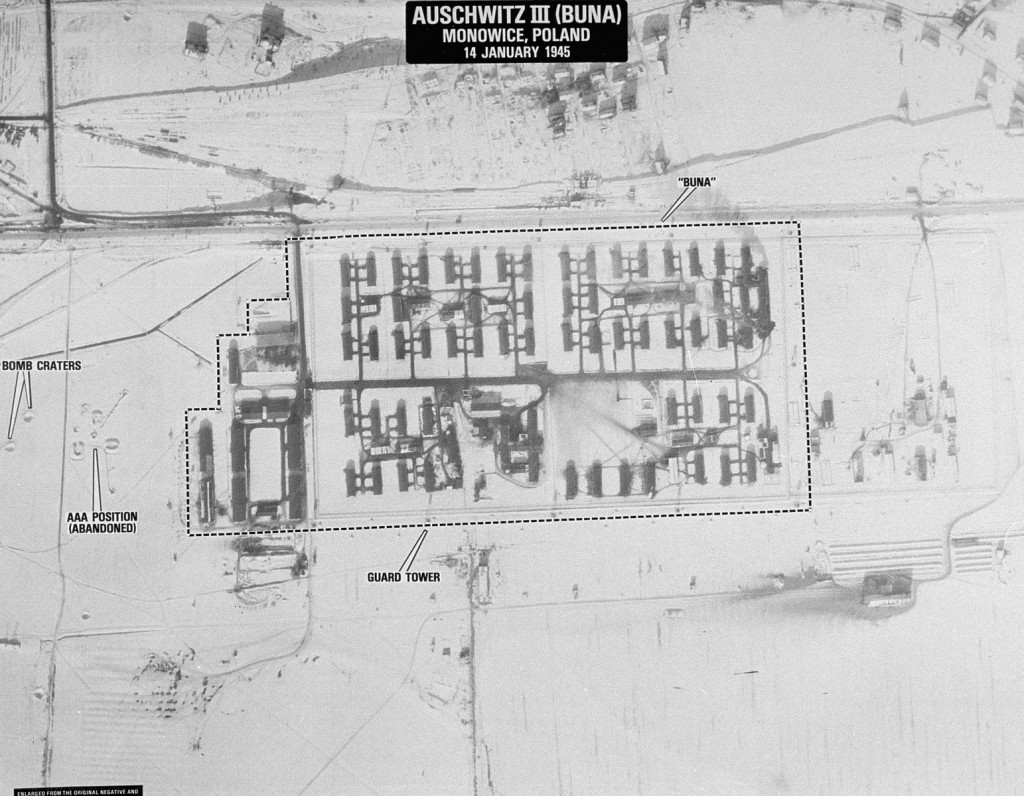
April
The German chemical conglomerate I.G. Farben begins construction of the Buna factory using concentration camp forced laborers from Auschwitz. Located near the Polish city of Monowitz, a few miles from the Auschwitz concentration camp, I.G. Farben managers and SS officials refer to the site as Labor Detachment Buna.
May 1
Having previously established Gross-Rosen as a subsidiary camp of the Sachsenhausen concentration camp, the SS Inspectorate of Concentration Camps now redesignates Gross-Rosen as an autonomous concentration camp.
May
In occupied France, German authorities open the internment camp Pithiviers to incarcerate both French Jews and foreign Jews residing in France. The German authorities often interned Jews in Pithiviers and other detention camps before transferring them to Drancy, from where the SS later deports them to the Auschwitz concentration camp and the Sobibor killing center.
May 21
The SS Inspectorate of Concentration Camps opens Natzweiler-Struthof concentration camp in France, near Strasbourg.
June 15
Hungary (November 20), Romania (November 23), and Slovakia (November 24) signed the Tripartite Pact and became Axis partners in 1940. Bulgaria followed suit on March 1, 1941; the so-called Independent State of Croatia joins on June 15, 1941.
June 22
Nazi Germany invades the Soviet Union in "Operation Barbarossa." In accordance with previous agreements between SS and police and Wehrmacht representatives, German mobile units of Security Police and SD officials, called Einsatzgruppen, follow the frontline troops into the Soviet Union. RSHA chief Heydrich had tasked the Einsatzgruppen commanders with identifying, concentrating, and killing Jews, Soviet officials and other persons deemed potentially hostile to German rule in the east. Einsatzgruppen squads begin to carry out mass shootings during the last week of June 1941.
June 26–30
Romanian military and police officials conduct a pogrom in the city of Iasi, Romania, killing at least 4,000 Jews.
July
During the month of July 1941, Einsatzkommando 9 murders approximately 5,000 Jews in Vilna (Wilno; Vilnius), Lithuania.
July 17
As the result of a meeting of the top Nazi leaders the previous day, Hitler entrusts Heinrich Himmler with responsibility for all security behind the front lines in the occupied Soviet territories. In the next days and weeks, Himmler appoints three Higher SS and Police Leaders Russia-North, Russia-Center, and Russia-South to coordinate and expand mass killing operations initiated by Einsatzgruppe personnel.
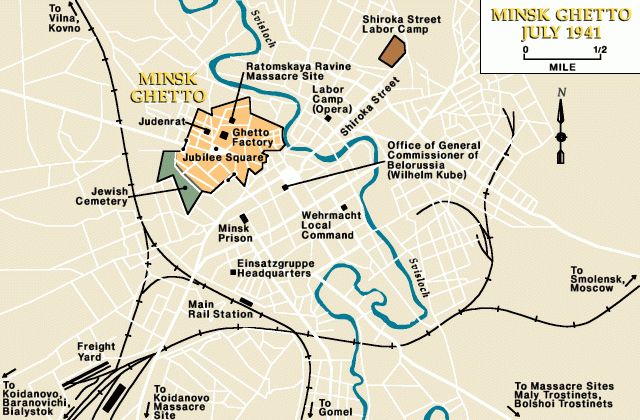
July 19
German authorities establish a ghetto in Minsk in German-occupied Belorussia. By July 25, they concentrate Jews from the city and its environs in the ghetto.
July 31
Reich Marshall Hermann Göring charges Reinhard Heydrich, head of the RSHA, to take measures for the implementation of the “final solution of the Jewish question”—a euphemism for the mass murder of the Jewish population of Europe.
August
The Croat authorities establish the first two camps in the Jasenovac concentration camp complex. During the camp's existence, the Croat authorities kill tens of thousands of prisoners at Jasenovac, including Serbs, Jews, Roma (Gypsies), and ethnic Croats and Muslims, who were political and religious opponents of the regime.
August 1
German authorities establish a ghetto in Bialystok, the administrative seat of a region incorporated as an autonomous district into the Greater German Reich in the summer of 1941. Some 50,000 Jews will be concentrated in the Bialystok ghetto.
August 15
German authorities seal off the Kovno (Kaunas; Yiddish: Kovne) ghetto, with approximately 30,000 Jewish inhabitants.
August 20
In Drancy, France, German authorities open an internment and transit camp for Jews. The SS eventually deports Jews captured in France from Drancy to Auschwitz-Birkenau and the Sobibor killing center.
August 24
Responding in part to the public protest of the Catholic Archbishop of Münster, Clemens von Galen, Adolf Hitler orders the cessation of centrally coordinated “euthanasia” killings. Up to this date, German health care professionals murdered approximately 70,000 people at “euthanasia” facilities. The killing operations continue, however, involving both adults and children with physical and intellectual disabilities. Among the methods used are starvation, lethal injection, and deliberate failure to treat serious disease.
August 27–29
SS and police units, supported by locally recruited auxiliaries and German military personnel, kill 23,600 Jews in Kamenets-Podolsk (Kamenets-Podol'skiy), Ukraine, in an operation coordinated by Higher SS and Police Leader Ukraine Friedrich Jeckeln.
August 28
In France, German authorities open a police detention camp in Compiègne. Initially a prisoner-of-war camp (called Royallieu or Fron Stalag 122), this camp serves as a transit camp for French and Jewish intellectuals as well as political prisoners. These prisoners are eventually deported to Buchenwald and Dachau or to Auschwitz via Drancy.
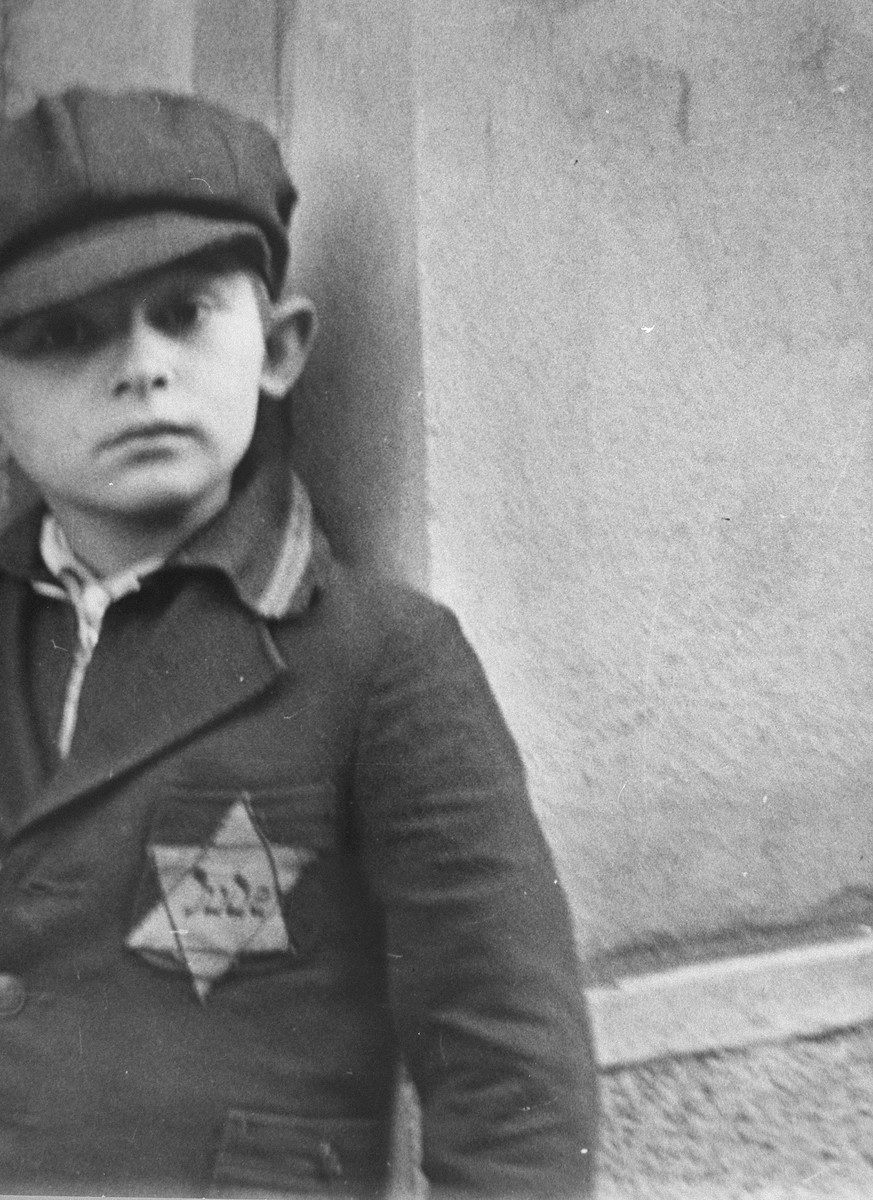
September 1
The Reich Minister of the Interior decrees that Jews over the age of six in the Greater German Reich must wear a yellow Star of David on their outer clothing in public at all times.
September 2
German authorities and their Lithuanian auxiliaries murder approximately 3,700 Jewish residents of Vilna (Wilno; Vilnius) in the nearby Ponary (Paneriai) Forest.
September 3
At the Auschwitz concentration camp, SS functionaries perform their first gassing experiments using Zyklon B. The victims are Soviet prisoners of war.
September 6
The German authorities seal off two ghettos in Vilna (Wilno; Vilnius) in German-occupied Lithuania. German SS and police and their Lithuanian auxiliaries killed approximately 4,500 Jews in the nearby Ponary Forest in mid-September.
September 29–30
Under the leadership and with the coordination of the Higher SS and Police Leader in the Ukraine, Friedrich Jeckeln, German SS and police units, supported by Ukrainian auxiliaries and German military personnel, shoot approximately 33,000 persons, mostly Jews, at the Babi Yar ravine on the outskirts of Kiev, Ukraine. In the following months, German units shoot thousands of Jews, Roma (Gypsies), and Soviet prisoners of war at Babi Yar.
October 15
After Hitler's authorization in September, German authorities began deporting German, Austrian, and Czech Jews from the Greater German Reich to ghettos, shooting sites, concentration camps, and killing centers, primarily in German-occupied Poland, the German-occupied Baltic States, and German-occupied Belarus, but also eventually to Theresienstadt in the Protectorate of Bohemia and Moravia. From October 15, 1941, until October 29, 1942, German authorities deport approximately 183,000 German, Austrian, and Czech Jews to ghettos, transit ghettos, killing centers, and killing sites in the Baltic States, in Belorussia, in the Generalgouvernement, and the Lodz ghetto.
October 15
Heinrich Himmler tasks the SS and Police Leader in Lublin District, SS General Odilo Globocnik, with implementing a plan to systematically murder the remaining Jews in the so-called General Government. This plan later becomes known as “Operation Reinhard.” The Operation Reinhard team is ultimately responsible for the murder of approximately 1.7 million Jews, most of them Polish Jews. These murders occur in three killing centers (Belzec, Sobibor, Treblinka) and related shooting operations.
Late October
The first prisoners arrive at the prisoner-of-war camp of the Waffen-SS located on the edge of Lublin City in the Generalgouvernement.
October 23
The German government forbids Jews to emigrate from the Greater German Reich.
October 25
German authorities seal the ghetto in Riga, Latvia, confining about 30,000 Jews.
October 29
German SS and police units and Lithuanian police auxiliaries murder 9,200 residents of the Jewish ghetto in Kovno (Kaunas; Kovne) in Fort IX on the edge of the city.
November
On Globocnik's orders, Wirth deploys teams of engineers, construction workers, and guards to Belzec, Sobibor, and Malkinia to construct the proposed Operation Reinhard killing centers.
November 8
The German authorities in District Galicia of the Generalgouvernement order the establishment of a ghetto in Lvov (Lwow; L'viv) by December 15.
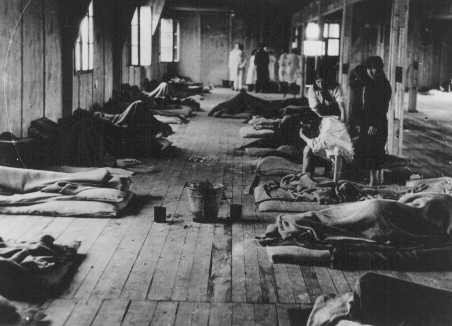
November 24
German authorities establish the camp-ghetto Theresienstadt (located in the garrison town of Terezin in the German-controlled Protectorate of Bohemia and Moravia).
November 30-December 9
German SS and police units and their Latvian police auxiliaries conduct a mass killing action of Jews from the Riga ghetto. They murder at least 25,000 Latvian Jews in the nearby Rumbula Forest.
December 7
Japan attacks the United States, bombing Pearl Harbor.
December 8
The United States declares war on Japan, entering World War II.
December 8
Killing operations begin at the Chełmno killing center, located about 40 miles northwest of Łódź. The killing center operates from December 1941 until April 1943 and then from June 1944 until January 1945.
December 11
Germany and Italy declare war on the United States.
Critical Thinking Questions
How do German actions against the Jews in 1941 illustrate the systematic and bureaucratic nature of the assault on the Jews of Europe?
How did the Jews attempt to survive and maintain their community integrity and identity as conditions in the ghetto deteriorated?
How did the war aims of the invasion of the Soviet Union differ from the goals in Western Europe? What did this mean for Jews and other civilians?
What events in the fall of 1941 illustrate the acceleration of the program to murder the Jews of Europe?

